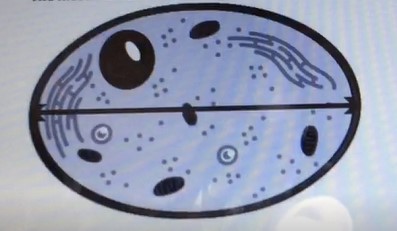The measurement indicated by the line across the center of the cell is best referred to as which of the following?
A. Area.
B. Diameter.
C. Volume.
D. Radius.
Diameter.
The diameter is the measurement of a straight line passing through the center of a circle and connecting two points on its circumference.
In this case, the line across the center of the cell represents the diameter of the cell.

Choice A, Area, is not the correct answer because area refers to the amount of space inside a two-dimensional shape.
Choice C, Volume, is not the correct answer because volume refers to the amount of space occupied by a three-dimensional object.
Choice D, Radius, is not the correct answer because radius refers to the distance from the center of a circle to its circumference and is half the length of the diameter.
Therefore, the Correct Answer is B.